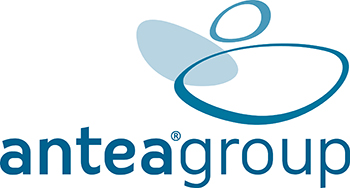NORTHAMPTON, MA / ACCESSWIRE / October 25, 2022 / Chemicals that belong to the family of per-and poly-fluoroalkyl substances (PFAS) are back in the news as a study published by the American Chemical Society found PFAS is globally present in rainwater, often exceeding safe maximums set by the EPA and other governing bodies.

This risk to global drinking water is raising new alarms. While the health and environmental impacts of PFAS chemicals have yet to be fully realized, there is enough litigation risk that corporations are proactively addressing PFAS in their production and supply chains.
Our webinar, PFAS Risk: Are You on The Offense or Defense, is available on demand for an in-depth exploration of the state of PFAS regulation and remediation efforts.
In conjunction with this webinar, we've put together some information to help you understand the risks associated with PFAS contamination and an action plan guide to aid your organization's risk assessment, mitigation, and remediation efforts.
What are PFAS chemicals and why are they a risk?
PFAS chemicals were developed in the 1940s and are used in many household and industrial products and functions, including nonstick cookware, firefighting foam, and stain- and water-repellent clothing. There is a growing list of chemicals that fall under the PFAS designation according to the Center for Disease Control and Prevention (CDC) and over 12,000 in EPA's PFAS master list.
The very thing that makes PFAS chemicals so effective at resisting heat, oil, and water also makes them resistant to decay. Sometimes referred to as "forever chemicals," certain PFAS properties do not break down through natural means.
These chemicals can accumulate in soil, water, and the bloodstream. Per the CDC, studies indicate PFAS can damage the liver and immune system.
PFAS Regulations
Globally, there is no centralized authority responsible for the regulation of PFAS chemicals. Regulations can vary between the municipal, regional, and federal levels. The EPA has been a leader in the study of PFAS, and its findings are often used by other governing bodies to create regulations.
New Health Advisory Levels
In June of 2022, the EPA set new interim health advisory levels for safe drinking water. This advisory pertains to four PFAS chemicals - PFOA, PFOS, GenX, and PFBS. These new levels are a significant reduction from the advisory levels set in 2016, meaning corporations will need to be even more vigilant with their PFAS use and disposal.
Proposed Hazardous Designation
In August of 2022, the EPA proposed a rule change to designate perfluorooctanoic acid (PFOA) and perfluorooctanesulfonic acid (PFOS) as hazardous substances. This proposed change would increase transparency around the release and mitigation of these two chemicals, holding more corporations accountable for drinking water contamination and soil remediation costs.
What This Means for Businesses
Organizations that don't take a proactive approach to confront PFAS in their supply and production chains, as well as remediating past environmental impact, are at risk of PFAS-related litigation.
The rate of litigation has increased in recent years as regulations tighten and more is learned about the long-term impact of these chemicals. Even corporations that don't manufacture PFAS are at risk if they handle and dispose of PFAS-containing products.
Because PFAS have been used in a wide spectrum of applications across multiple industries, it is advisable for organizations to proactively assess their risk level for PFAS contamination.
PFAS Actions You Can Take Right Now
With inconsistent regulations and a list of over 12,000 chemicals designated as PFAS, conducting a PFAS risk assessment can seem like a daunting task. But with the increase in regulations and litigation, it is a necessary and valuable process.
To help you move through the process as efficiently and thoroughly as possible, we've broken it down into four essential action steps. By following these action steps, your organization can ensure you're remaining compliant with current regulations, regardless of your regulatory jurisdiction.
Action 1: Desktop PFAS screening audit
Conducting a desktop PFAS screening audit is an excellent way to establish a baseline of PFAS risk within your organization.
The first step is identifying industries and activities your organization is involved with that are already on the EPA regulatory watch list. Once you know you have products, components, or suppliers that put you at risk, you can work with a PFAS subject matter expert (SME) to review your safety data sheets (SDS) and supply chain. From there, send out a consistent questionnaire to each of your facilities to ensure you are accounting for all PFAS risk factors at every location.
By processing this data through a central desktop PFAS screening tool, you can get a clear picture of high-risk areas within your corporate ecosystem that need to be addressed.
Action 2: Eliminate PFAS in your supply chain
Removing PFAS from your supply chain - including subcontractor use - is a good first step in reducing your PFAS contamination risk. Ensure your SDS database is up to date with the latest versions from the manufacturers and consider finding alternative solutions that are PFAS-free.
One roadblock to be aware of is the use of "trade secret" listings to obfuscate the actual composition of a product that may contain PFAS. This is why working with SMEs and doing due diligence to confirm the presence of PFAS is important.
If you do eliminate PFAS from your supply chain or operations, make sure you thoroughly clean equipment to eliminate all remaining PFAS. Don't forget to evaluate and make adjustments to your machinery and process to ensure the replacement product works properly.
Action 3: Disposal and emergency planning
If using PFAS chemicals is a mandatory part of your business operation you will need to develop disposal and emergency containment plans.
New disposal methods for PFAS are being developed and deployed (you can learn more about these options in the webinar), but it is ultimately up to each organization to decide which method works best for its particular needs.
Investigate your options for disposal by creating a list of providers near each of your PFAS-containing facilities. Make sure these providers are up to date with their permitting and have a compliant regulatory record.
You will also need to explore options for how to safely contain PFAS in emergencies. A PFAS disposal or remediation SME should be able to help you with planning for wastewater or stormwater contamination, as well as an emergency response plan for incidents such as fires or natural disasters.
For further guidance, see the EPA's December 2020 Interim Guidance on Destroying and Disposing of Certain PFAS and PFAS-Containing Materials That Are Not Consumer Products.
Action 4: Inventory and dispose of or return existing supplies containing PFAS
By this point in the process, you have a clear understanding of how PFAS impacts your operations. If you have chosen to eliminate all PFAS from your facility, you may be required by applicable regulations to remediate the facility to avoid the risk of legacy liability.
Maintain a regular inventory of all PFAS materials still in use within your facilities and regularly update your PFAS database to ensure you are prepared for compliance with new regulations.
About Antea Group
Antea®Group is an environment, health, safety, and sustainability consulting firm. By combining strategic thinking with technical expertise, we do more than effectively solve client challenges; we deliver sustainable results for a better future. We work in partnership with and advise many of the world's most sustainable companies to address ESG-business challenges in a way that fits their pace and unique objectives. Our consultants equip organizations to better understand threats, capture opportunities and find their position of strength. Lastly, we maintain a global perspective on ESG issues through not only our work with multinational clients, but also through our sister organizations in Europe, Asia, and Latin America and as a founding member of the Inogen Alliance. Learn more at us.anteagroup.com.
View additional multimedia and more ESG storytelling from Antea Group on 3blmedia.com.
Contact Info:
Spokesperson: Antea Group
Website: https://us.anteagroup.com/
Email: [email protected]
SOURCE: Antea Group




